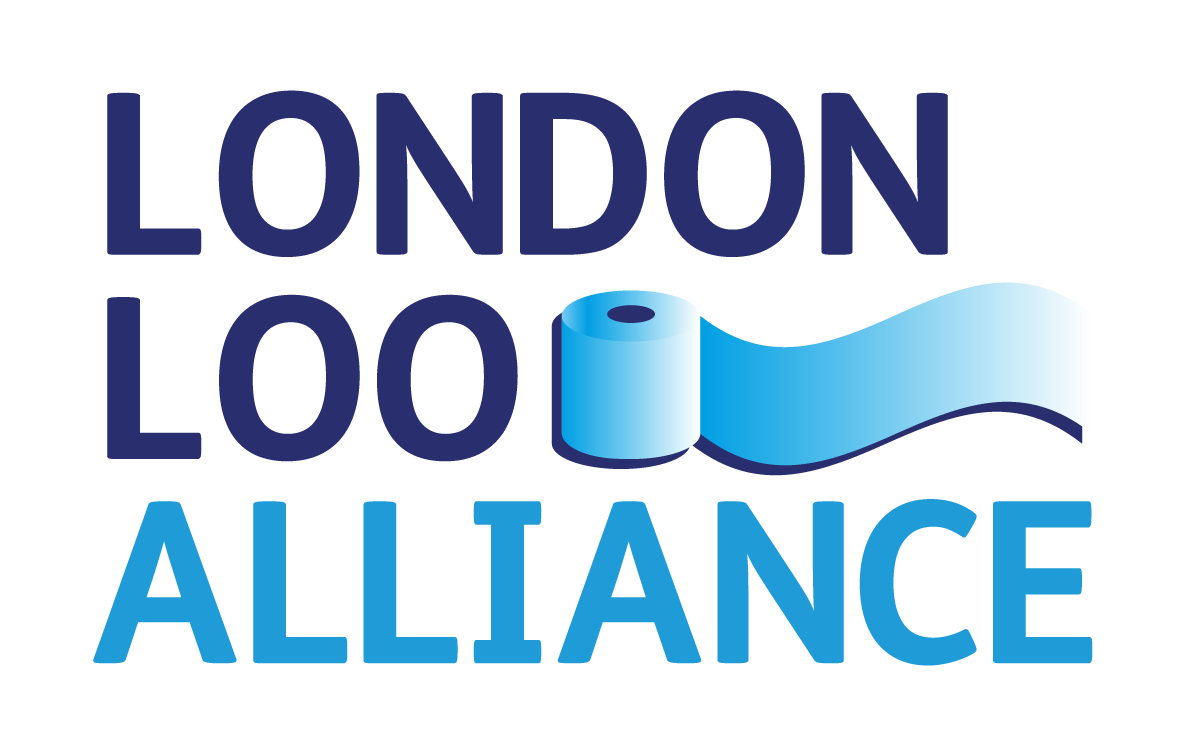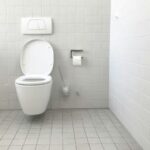Monthly Archives: July 2016
10th Anniversary Celebrations

2006 – 2016
CHANGING PLACES CONSORTIUM CELEBRATE 10 YEARS OF CAMPAIGNING ACROSS THE UK
ITS ALL ABOUT #incLOOsion
Since 2006, the Changing Places Consortium has been campaigning for fully accessible toilets to support the rights of people with profound and multiple learning, and/or other physical disabilities, to access their community. Standard disabled toilets are not accessible for disabled people and can lead to unhygienic and stressful trips out for disabled people and their families. Being able to go to the toilet is a basic civil right, however every day thousands of people with a disability face the choice of being changed on the floor of an unhygienic public toilet, remaining in soiled clothing or not going out at all.
A Changing Places toilet is a fully accessible toilet with a height-adjustable changing bench, an overhead track or mobile hoist; a peninsular toilet and enough space for up to two carers. The Changing Places campaign has led to the installation of over 840 Changing Places toilets across the UK.
CHANGING PLACES AWARENESS DAY – 19th JULY
 Raymond Martin joined Mike Le-Surf from Mencap on a run across London to highlight the need for more Changing Places in the capital. They were supported by campaigners from Mencap and Generate who met up with MP Jack Dromey in the Houses of Parliament at the end of the run.
Raymond Martin joined Mike Le-Surf from Mencap on a run across London to highlight the need for more Changing Places in the capital. They were supported by campaigners from Mencap and Generate who met up with MP Jack Dromey in the Houses of Parliament at the end of the run.
A new digital map has recently been launched to help people locate their nearest “Changing Places” toilets. “How far would you go?” Sign up on the new map webpage and find your nearest Changing Places toilet by visiting www.changingplacesmap.org.uk Find out how far you would have to go to find your nearest Changing Places toilet to highlight how disabled people can feel excluded from their local communities without these facilities. Use social media to let people know #howfarwouldyougo
Rossanna Trudgian, co-chair of the Changing Places Consortium said: “It is fantastic to see more and more Changing Places toilets being installed across the UK as we celebrate 10 years of campaigning. However, there are still many large public places across the UK that lack Changing Places toilets and therefore deny people’s rights. With the help of our fantastic campaigners, and our campaign sponsors Aveso, we will continue to fight to make sure every single one of the ¼ million people in the UK who require a Changing Places toilet, can access one.”

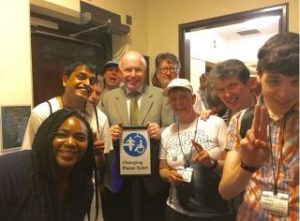
For information and advice on Changing Places
Michael le Surf
Mencap
Telephone: Direct on 020 7696 6019
Website: www.mencap.org.uk.
E-mail: changingplaces@mencap.org.uk
CHURCHES and TOILETS

An opinion poll into public attitudes to church buildings
A recent poll shows that the public welcomed Government funding for church heritage and revealed what would get them to return to visiting churches, chapels and meeting houses

60 % of British adults back the Government providing financial support for churches, chapels and meeting houses in order to protect their heritage and history for future generations, according to the findings of a new opinion poll, commissioned by the National Churches Trust. The overwhelming majority of British adults (84%) think that the UK’s churches, chapels and meeting houses are an important part of the UK’s heritage and history, according to the findings of the ComRes poll, which interviewed 2,038 GB adults online between the 16th and 17th December 2015.
A further 83% of British adults think that the UK’s churches and chapels and meeting houses play an important role for society. When people were asked what would most encourage them to visit churches, the top five responses were:
- A friendly welcome
-
The provision of toilets
- A Café or refreshment area,
- Comfortable seating
- Access to useful visitor information
The poll found that 57% of British adults said that they had visited a church in the past year for religious services, non-religious activities or as a visitor or tourist.
A few of the Key findings include:
- More than four in five Britons (84%) agree that the UK’s churches, chapels and meeting houses are an important part of the UK’s heritage and history.
- The majority of British adults (83%) agree that churches, chapels and meeting houses are important for society as they provide a space in which community activities can take place, as well as worship. But what would encourage more of them to visit a one of these places
-
34% said the provision of toilets
- 32% said that a Café or refreshment area
- 29% said that comfortable seating and
- 28% said that access to useful visitor information would encourage them to visit
- Younger adults (those aged 18-34) say that Wi-Fi would encourage them to visit
- 46% of British adults agreed that it is difficult to find useful visitor information, such
as directions, opening hours and details of things to see and do.
Claire Walker, Chief Executive of the National Churches Trust said:
“This poll shows that there is overwhelming public support for church buildings, despite the decline in the numbers of people in Britain identifying themselves as Christian in recent years.” The British public thinks that churches, chapels and meeting houses are an important part of the UK’s heritage and history and that they are also important for society as they provide a space in which community activities can take place, as well as worship. Looking to the future, our poll shows how even more people could be encouraged to visit churches. That includes making sure that visitors receive a friendly welcome and providing better facilities such as toilets, a Café or refreshment area and Wi-Fi was seen as particularly important by young adults. “
“However, the huge support for churches demonstrated by this poll will, I hope, encourage local communities and church authorities to keep their buildings open & in good repair and with the right facilities to allow greater community use for many years to come.”
Churches, chapels and meeting houses can continue to play a vital role in the life and well-being of the nation!
Chinese Toilets with Wi-Fi
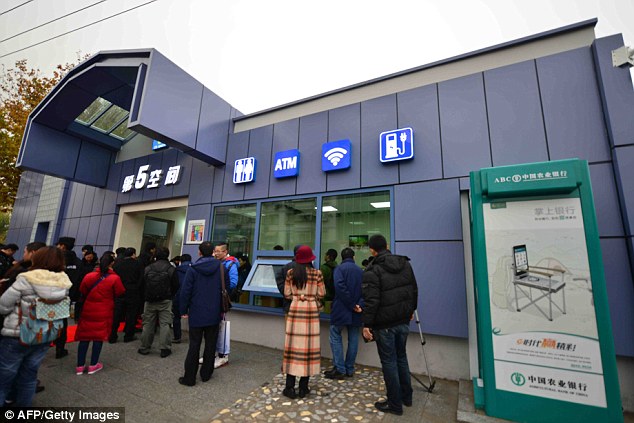
Wi-Fi, ATMs and turbo-flush toilets:
China reveals its latest high-tech restrooms which could soon become commonplace
By Cheyenne MacDonald and Tracy You for Mail-on-Line
China is working hard to overhaul its public sanitation system, and it’s updating toilets with Wi-Fi, television screens, and even ATM machines. People don’t usually like to linger in public restrooms; in China, with the squat toilets, shortage of toilet paper, and sometimes unsanitary conditions, the bathroom experience can be daunting. Now, high-tech restrooms could turn public toilet-use into a more enjoyable situation. High-tech toilet developments could give Chinese bathrooms a new reputation. China is working hard to overhaul its public sanitation system, and it’s updating toilets with Wi-Fi, television screens, and even ATM machines. 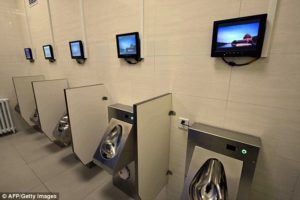 According to The New York Times, China will be renovating or constructing 57,000 public bathrooms, and some of them will be equipped with high-tech gadgets. In Fangshan, a new public facility has turbo-flushing powers in the toilets, along with wireless internet and TV screens in the stalls. The windows are lined with aloe vera plants, and a cello soundtrack plays in the background. The first new-generation bathroom opened to the public in November, in front of the government offices of the Fangshan District in south-west Beijing.It will even conserve water, recycling sink water to flush toilets. The event was timed to celebrate the ‘World’s Toilet Day,’ which falls on the same day, and is a part of the first ‘China Toilet Revolution Propaganda Day. For many years, China has suffered from sanitary issues in its public bathrooms. In poorer communities, 14 million people must defecate in the open. ‘Change is certainly needed,’ Lu Suisheng told NYT. ‘In some Chinese toilets, people need to step on bricks to avoid stepping on dirty areas. How can you use toilets like that?’
According to The New York Times, China will be renovating or constructing 57,000 public bathrooms, and some of them will be equipped with high-tech gadgets. In Fangshan, a new public facility has turbo-flushing powers in the toilets, along with wireless internet and TV screens in the stalls. The windows are lined with aloe vera plants, and a cello soundtrack plays in the background. The first new-generation bathroom opened to the public in November, in front of the government offices of the Fangshan District in south-west Beijing.It will even conserve water, recycling sink water to flush toilets. The event was timed to celebrate the ‘World’s Toilet Day,’ which falls on the same day, and is a part of the first ‘China Toilet Revolution Propaganda Day. For many years, China has suffered from sanitary issues in its public bathrooms. In poorer communities, 14 million people must defecate in the open. ‘Change is certainly needed,’ Lu Suisheng told NYT. ‘In some Chinese toilets, people need to step on bricks to avoid stepping on dirty areas. How can you use toilets like that?’
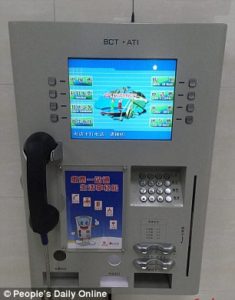 According to the noticeboard displayed outside of the building, the spacious beige-tiled restroom has 11 different sections, including male toilets, female toilets, unisex toilets, accessible toilets, baby-changing facilities, an e-commerce area and an ATM room. The entire area has available Wi-Fi and there are vending machines selling different type of soft drinks. Each toilet or urinal is equipped with a flat-screen TV set nearby for entertaining the user. In Fangshan, a new public facility named ‘The Fifth Space,’ has turbo-flushing powers in the toilets, along with wireless internet and TV screens in the stalls. The windows are lined with aloe vera plants, and a cello soundtrack plays in the background.
According to the noticeboard displayed outside of the building, the spacious beige-tiled restroom has 11 different sections, including male toilets, female toilets, unisex toilets, accessible toilets, baby-changing facilities, an e-commerce area and an ATM room. The entire area has available Wi-Fi and there are vending machines selling different type of soft drinks. Each toilet or urinal is equipped with a flat-screen TV set nearby for entertaining the user. In Fangshan, a new public facility named ‘The Fifth Space,’ has turbo-flushing powers in the toilets, along with wireless internet and TV screens in the stalls. The windows are lined with aloe vera plants, and a cello soundtrack plays in the background.
The efforts to clean up the public restroom are received well by many, but some residents argue that the technological additions are a waste of money that could be put to better use elsewhere. Others argue that these new gadgets in the restrooms will lead people to spend unnecessary time on the toilet and force others to wait.
Toilet users can also buy drinks from the vending machines (left) and pay their utility bills using a multi-purpose phone. The efforts to clean up the public restroom are received well by many.
 Charging stations have been installed outside the building so that customers can leave their electric bikes to be powered while answering the call of nature. It seems designers hope the new facility will be a meeting point for residents away from home and work. A spokesman from Beijing Environmental Sanitation Engineering Group told the People’s Daily Online that they hope the new public restroom will become ‘the fifth space’ besides the family space, work space, leisure space and cyber space. Hence, the sign of the restroom will be changed from ‘WC’, a traditional sign for public toilets in China, to the number ‘5.’
Charging stations have been installed outside the building so that customers can leave their electric bikes to be powered while answering the call of nature. It seems designers hope the new facility will be a meeting point for residents away from home and work. A spokesman from Beijing Environmental Sanitation Engineering Group told the People’s Daily Online that they hope the new public restroom will become ‘the fifth space’ besides the family space, work space, leisure space and cyber space. Hence, the sign of the restroom will be changed from ‘WC’, a traditional sign for public toilets in China, to the number ‘5.’
And even all the functions above are not enough in Beijing’s ambition toilet revolution. The spokesman said: ‘We will learn Japan’s experience to provide basic physical examination in the restrooms, such as blood pressure, heart rate and urinalysis.’ More of these ‘The Fifth Space’ toilets are due to open on the outskirts of Beijing soon – in Fangshan, Tongzhou, Shunyi and Pingu districts – as well as other Chinese cities, including Guiyang, Haikou, Kunming and Zhangjiakou.
THE PUBLIC SANITATION PROBLEM
- The new bathrooms are cleaner, but some argue they are a waste of money
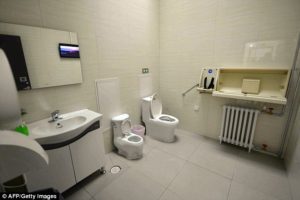 China will be renovating or constructing 57,000 public bathrooms, and some of them will be equipped with high-tech gadgets. Toilets in China, often squat toilets or concrete pits, have remained unchanged for generations. Between 1990 and 2010, China updated facilities for 593 million people, but the changes did not extend to everyone. For many years, China has suffered from sanitary issues in its public bathrooms. In poorer communities, 14 million people must defecate in the open. Many people are now arguing that unnecessary additions, like TVs, are a waste of money that could be used instead to update the facilities in poor areas.
China will be renovating or constructing 57,000 public bathrooms, and some of them will be equipped with high-tech gadgets. Toilets in China, often squat toilets or concrete pits, have remained unchanged for generations. Between 1990 and 2010, China updated facilities for 593 million people, but the changes did not extend to everyone. For many years, China has suffered from sanitary issues in its public bathrooms. In poorer communities, 14 million people must defecate in the open. Many people are now arguing that unnecessary additions, like TVs, are a waste of money that could be used instead to update the facilities in poor areas.
Public Health (Wales) Bill Revised

Public Health (Wales) Bill
Expected to be laid before the Assembly again in September 2016
Carwyn Jones has been re-elected as Welsh First Minister

Carwyn Jones has been confirmed back into the role as the First Minister of Wales. In a speech to the Assembly, Mr Jones set out priorities for his minority administration government, saying he will concentrate primarily on issues with cross-party support, following agreements with Plaid Cymru.
He said: We will not bring forward any new legislation in the first 100 days, giving political groups in the Assembly some time to establish a new way of doing law-making in Wales. This will allow all parties to jointly develop a scrutiny and committee procedure that is better suited to this institution’s Parliamentary responsibilities.
Once the Assembly is in a position to better scrutinise legislation we will look to bring forward a new Public Health (Wales) Bill, which was proposed by the previous Minister for Health.
This Bill is asking for all Local Authorities in Wales to develop a strategy for the provision of public toilets across all electoral areas. Councils must take into consideration the continuing needs of a wide range of user groups in addition to many thousands of visitors and tourist being encouraged to visit Wales and enjoy the experience. The BTA has been actively working with councils and government departments to support this legislation coming into existence.
First Pay Toilet
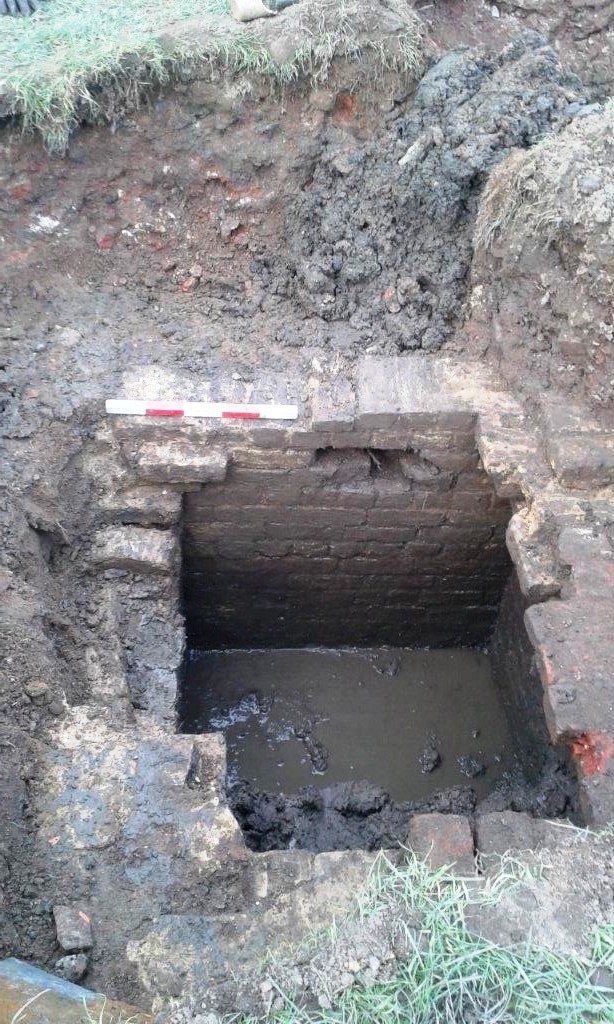
Toilet remains from ‘spend a penny’ exhibition uncovered in Hyde Park
Posted on Tuesday 7 June 2016
The remains of a 165-year-old toilet from the world famous exhibition which helped coin the phrase ‘spend a penny’ have been uncovered in London’s Hyde Park.
The discovery was made by workmen creating a new pump house as part of a major water project on the site of the former Great Exhibition of 1851. What they initially thought was a pile of underground bricks is actually believed to be one of the few structures from the temporary exhibition to have ever been uncovered.
The news comes 165 years since the Great Exhibition – the world’s first trade fair – opened in 1851 (on May 1) in Joseph Paxton’s iconic Crystal Palace, which at the time was the largest building on Earth. It attracted six million visitors and was organised by a Royal Commission, whose President was Queen Victoria’s husband Prince Albert.
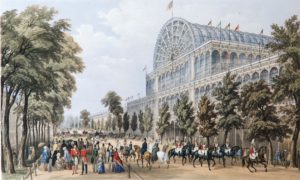
One of the Great Exhibition’s landmark inventions was the introduction of the UK’s first paid-for flushing public toilet, when visitors spent one penny to experience a clean toilet seat, a towel, a comb and a shoe shine. Records show that 675,000 pennies were spent. When the exhibition finished, the Crystal Palace was moved to Sydenham, and the toilets were set to be closed down.
However, Brighton plumber George Jennings, who invented the palace’s toilets, persuaded the organisers to keep them open. They later went on to raise a further £1,000 a year – the equivalent to almost 250,000 toilet trips.
Edward Strickland, who is leading the project for The Royal Parks, said:
“This is a really exciting find and very timely considering it’s exactly 165 years since the Great Exhibition opened. We work very closely with archaeologists and English Heritage on projects such as this and sometimes you really don’t know what you’re going to find – and buried Victorian cess pits aren’t usually high on the list.”
Archaeologist Les Capon from AOC Archaeology Group, which works with The Royal Parks on heritage projects, said:
“What has been discovered in Hyde Park is believed to be the remains of an earth closet which were common place as toilets until the Great Exhibition of 1851. That landmark event introduced the water closet or WC, and what we now commonly call the toilet.
“The uncovered earth closet is made from London stock bricks and dates back to the mid 1850s which, with its position on the edge of the former Great Exhibition site, would suggest that it was a toilet constructed for that event.”
Nigel Williams, Secretary of the 1851 Royal Commission, which still exists today and is recognised as the lead expert on the Great Exhibition, said:
“This is a fascinating discovery that once more brings to light the extraordinary innovations that the Great Exhibition inspired. It was the world’s first trade fair and the profits it generated – £186,000 – were used to establish the great cultural quarter in South Kensington, stretching from the Royal Albert Hall in the north down to the Natural History Museum and the V&A.
“With the remaining funds, the Commission created an educational trust which today distributes some £2.4m a year supporting research in science and engineering and other projects.”
The toilet was uncovered as The Royal Parks continue work on a project to create a new pump house near the Old Football Pitches and Tennis Centre on the southern edge of Hyde Park.
The project will see new water distribution pipework installed to supply borehole water to the lakes, irrigation systems, public toilets and the Diana Memorial Fountain in Hyde Park and Kensington Gardens. Following a request from the Environment Agency, it will see the primary water supply for the Long Water in Kensington Gardens coming from a bore hole near the Old Football Pitches instead of from the Italian Gardens.
Mr Strickland, who has been working closely with archaeologists on the project, said: “We have more than 20 lakes and ponds, and about 15 miles of river in the Royal Parks. We are proactive in our water management by reducing leaks and our reliance on treated mains water, abstracting water responsibly and looking to harvest rain and surface water.
“We’re already re-using historic reservoirs for water storage, and by using natural underground sources we’re able to supply our lakes, and use it for irrigation and public toilets.”
As work continues on the new pump house, The Royal Parks plans to re-cover the Great Exhibition toilet to ensure this historic structure remains in place for future generations.















